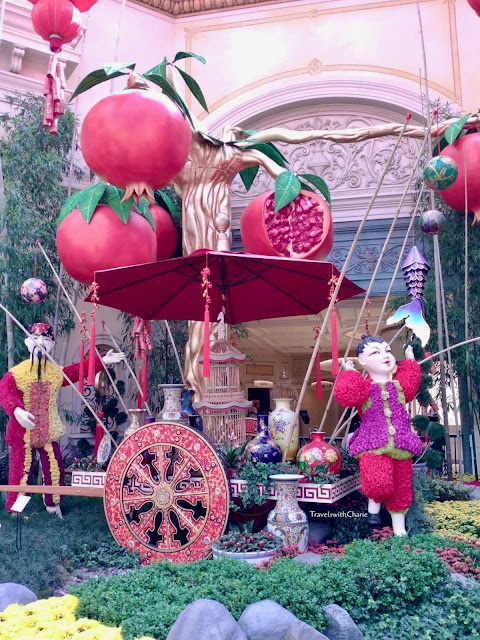The Bellagio Las Vegas celebrates Chinese Lunar New Year with a floral display of thousand of plants and flowers showcasing the “eye of the tiger” (2022 is the year of the tiger). An 8000 pound bronze tiger is at the center of the display amidst an explosion of colors. A golden money tree symbolizing good fortune dazzles to the right of the tiger.
In the Chinese zodiac calendar, the tiger represents strength, wisdom and bravery.
This vignette represents a knickknack peddler. Notice the pomegranate fruits above the umbrella.
The lotus is a symbol of rebirth and regeneration just as the new year brings renewed energy for a fresh start.
Children fishing beside a pagoda.
What an inviting tea house with a koi pond and carefully selected flora!
The “Eye of the Tiger” will be on display until March 5, 2022. The Spring display follows a week later on March 12th. The floral display is free and open to all visitors at the Bellagio.
Bellagio Las Vegas, 3600 Las Vegas Boulevard S.
Fiori di Como by Dale Chihuly in the lobby of the Bellagio
******
Images by TravelswithCharie







